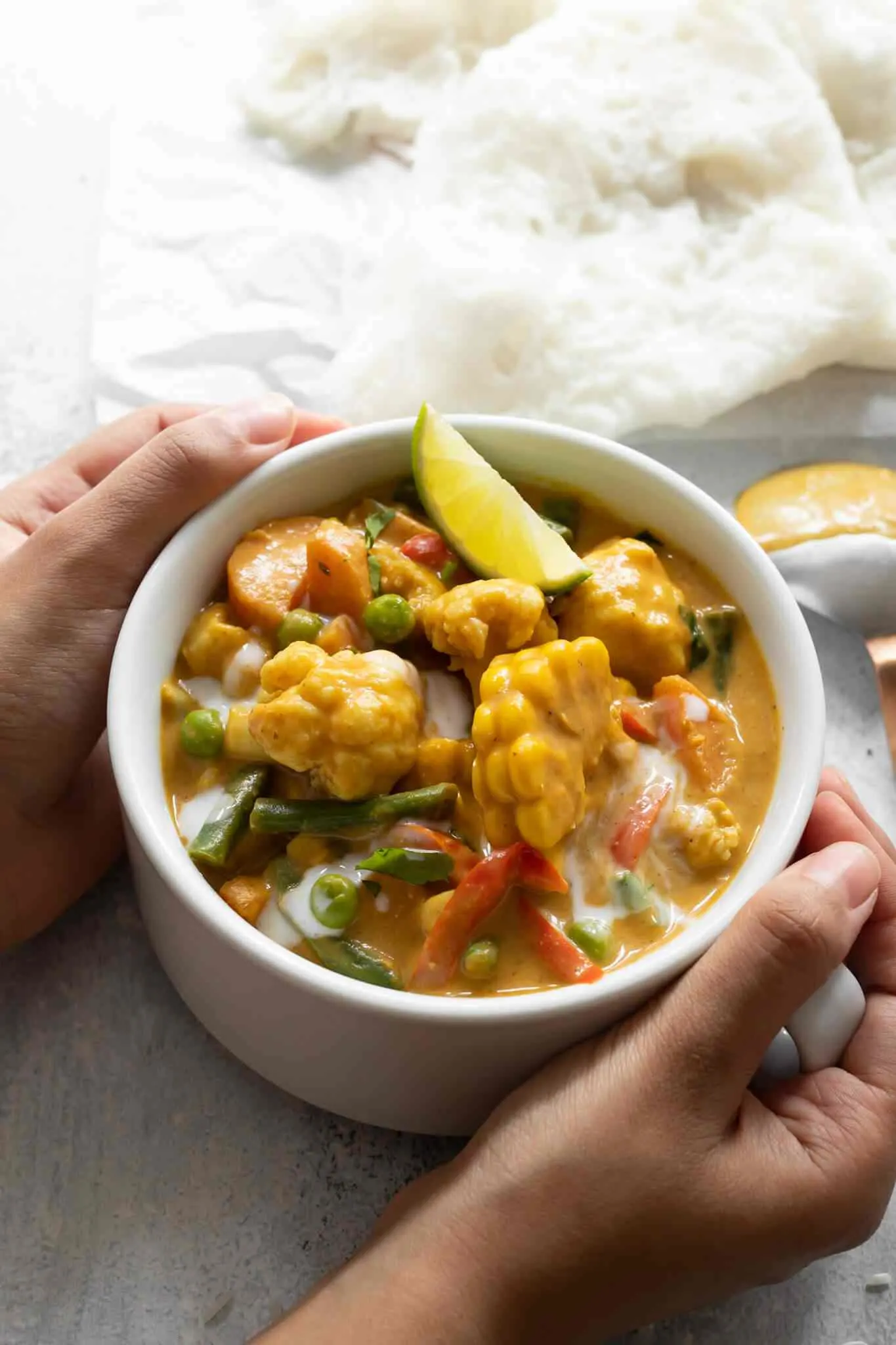Serve with dosa for a delicious vegan meal that’s gluten free too. It also pairs perfectly with rice, roti or paratha. I love to eat this with Neer Dosa.
What’s the difference between Kurma and Korma?
Both Kurma and Korma have roots in Mughalai cuisine. They are one in the same, adapted to local tastes over centuries. Their shared heritage means the two curries are a culinary venn diagram. At the intersection lies nuts (often cashews and almonds), seeds (often white poppy seeds) and a handful of spices. The spices include, but are not limited to: Coriander seeds, cloves, cinnamon, cardamom, mace (or nutmeg) and black peppercorns. In the South of India, Kurma puts locally abundant coconuts to use for a rich and creamy foundation. In the North of India, yoghurt and dairy cream add the opulence and richness Mughal dishes are famous for with Korma. Both Kurma and Korma are made using meat or vegetables, and both the dishes are stew-like, mild and aromatic. They can be either white, yellow or orange in colour.
Making a creamy, flavoursome masala
Kurma by its very nature is a rich and creamy curry. I like to create a thick and luscious base for this dish using a combination of onions, cashews and something that’s not as common in Kurma — raw rice! An old trick in some households but something that’s recently amped up my South Indian-style curries. First, I toast the rice up in the tadka (tempering) until golden. I like to blend my Kurma gravy for a smooth finish. Not only does this eliminate any chance of biting into whole spices, it also gives the cashews, rice and other aromatics a chance to get nice and familiar with one another. The result? TONNES of flavour!
Kurma: Troubleshooting
Pin it for later!
If you like this, you’ll love my recipe for Neer Dosa
Share this recipe















